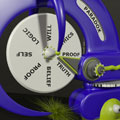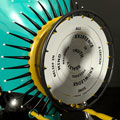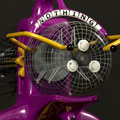Synopsis


Most often, the inspiration for my work begins with real world objects. The microscope has always fascinated me; not only for its visual appeal, but for the way it can reveal mysterious worlds. Since microscopes enable us to increase the perceptual scale of objects, it seemed appropriately ironic to dramatically increase the physical size of a microscope itself. A special device such as this might be able to reveal hidden worlds in both microscopic and macroscopic dimensions.
With the premise in mind, I constructed a detailed model of an old, low
power student microscope based on collected Internet images. While working
toward this end, the gist of the animation began to unfold, although I chose
to keep an open-ended timeline. The lack of a completed narrative is unnerving,
butI feel the edginess of improvisation steers me toward more unique solutions.
We try plan our lives but very often unexpected events change these trajectories,
and just as often, for the better as for the worse. Working primarily on
my own allows the freedom to take an unplanned turn which is critical to
a personally satisfying conclusion.

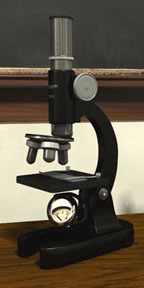
This microscope needed to be located in an older style classroom, so I explored
the University of Illinois campus one summer day looking for a likely example.
It is contrary to the reputation of a great university to appear outdated,
but the challenging search finally ended on the top floor of the English
building. A re-creation of this small, old-fashioned classroom now became
the environment for a standard-size student microscope. Since the classroom
still had slate blackboards, it fit with another goal to use a chalk drawing
to set the pretext for the narrative.
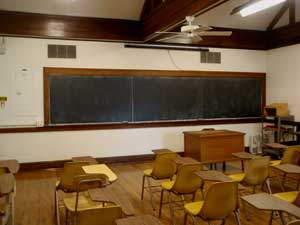
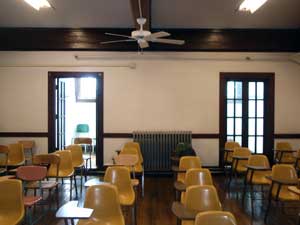

I found a pseudoscientific drawing on an obscure “time travel”
website which worked quite well for this purpose. Only later, after the
premise was finally decided upon was it uncannily apparent that the sketch
was even more accurate than hoped. It depicted a passage between the Andromeda
galaxy and the Milky Way galaxy and, coincidentally, the true scenario of
the animation. We begin in the classroom, presumably in our Milky Way galaxy,
then enter the Andromeda galaxy through the large microscope. The veiwer
moves through a shell within that starfield and finally exits the shell
into the classroom... back in our Milky Way galaxy again.
The starfield sequence is based on an actual NASA photograph of the M81, or Andromeda galaxy.
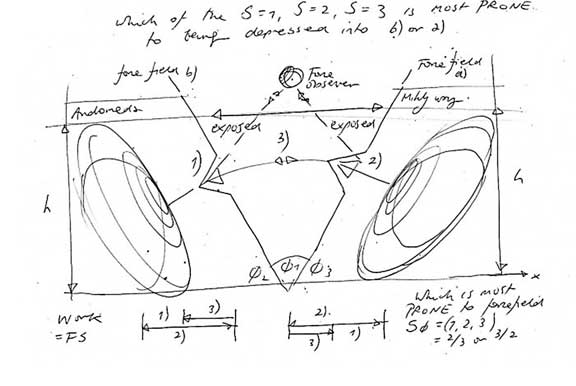
Another interior space that was appropriated from the University of Illinois
is that of the Armory Building, once one of the largest interiors in the
world not to utilize inner supports. Entering this huge building reminds
me of my recurring dream of large interior spaces. Invoking artistic licence,
this space became the site of the oversized counterpart to the smaller microscope
in the classroom.
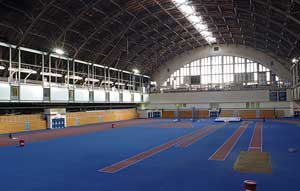
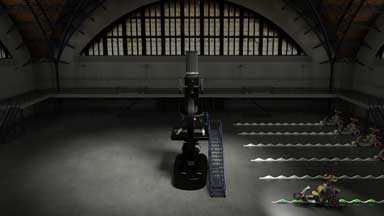
After five months of preparatory 3d object making and animation, I began
a fellowship with the eDream Institute at the University of Illinois. This
group, led by Professor Donna Cox, is dedicated to bringing the arts and
sciences together towards any number of creative collaborations. Besides
helpful advice and critique, they provided a network rendering solution
that facilitated the production of a high definition animation resulting
in hours and hours of computer rendering. I would not have been able to
accomplish this project without such an important resource located here
at the University of Illinois.

During the entire course of my career, I have utilized a suited “everyman”
as a subjective point of entry into imagined worlds. This is the first project
in which I animated a figure entirely by hand, rather than by using motion
capture technology. I found the process to be incredibly challenging and
time consuming. My hat is off to those who do this with the finesse required
to make it “unnoticeable.
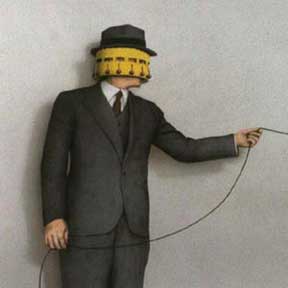
"A Sense of Responsibiliity"
Drawing (Detail) 1998
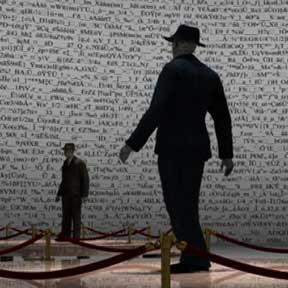
"The Necessities of Life"
Digital Animation (Detail) 2010
Working with the general theme of micro/macro, the final sequence, to be
viewed through the lens of the large microscope, offered an opportunity
to combine and contrast cosmic scale with microscopic detail. I came across
some video clips online of microscopic animal life created by videographer,
Craig Smith. Of the beautifully engaging videos he produced, I decided on
a small pond worm because the water debris surrounding the animal blended
well with the stars in the galactic environment. The amazing M81 (Andromeda)
galaxy animation was produced by Robert Patterson and Stuart Levy of the
eDream group specifically for this animation. This sequence is stellar in
any sense of the word.

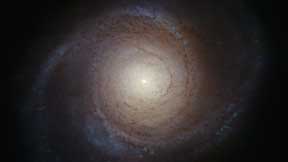
I created and mixed many of the foley noises or sound effects. It was great
fun drawing on a blackboard in time with a video loop to capture the chalk
sounds or spinning a socket wrench in the basement to simulate machine noises.
My long time friend, John Chase, composed and performed the compelling music
that dramatically ties the work together. I feel his music adds the (not
mutually exclusive) aspects of warmth and tension that is a critical aspect
of the work.
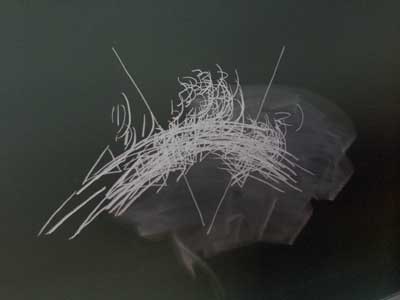
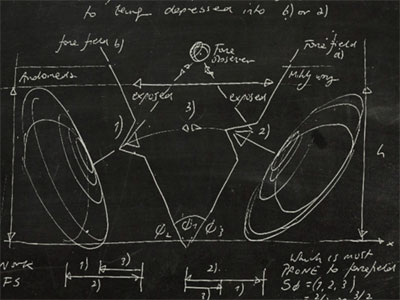
Duration:
• 8 minutes, 16 seconds
Video:
• 1280x 720, 30fps, Apple Pro Res, H.264, QuickTime
Software:
• 3DS Max 2012, Mental Ray, Final Cut Pro, DVD Studio Pro, Audacity
Modeling and Animation Hardware:
• Modeling and Animation: BOXX dual quadcore PC, 2.8 GHz, 8 Gb RAM, nVidia Quadro FX 4600, Samsung 30” and Apple Cinema 30” dual displays
• Video and DVD Editing: MacBook ProRendering Software and Hardware:
• Backburner; 6 PC work stations, courtesy National Center for Supercomputing Applications (NCSA)
